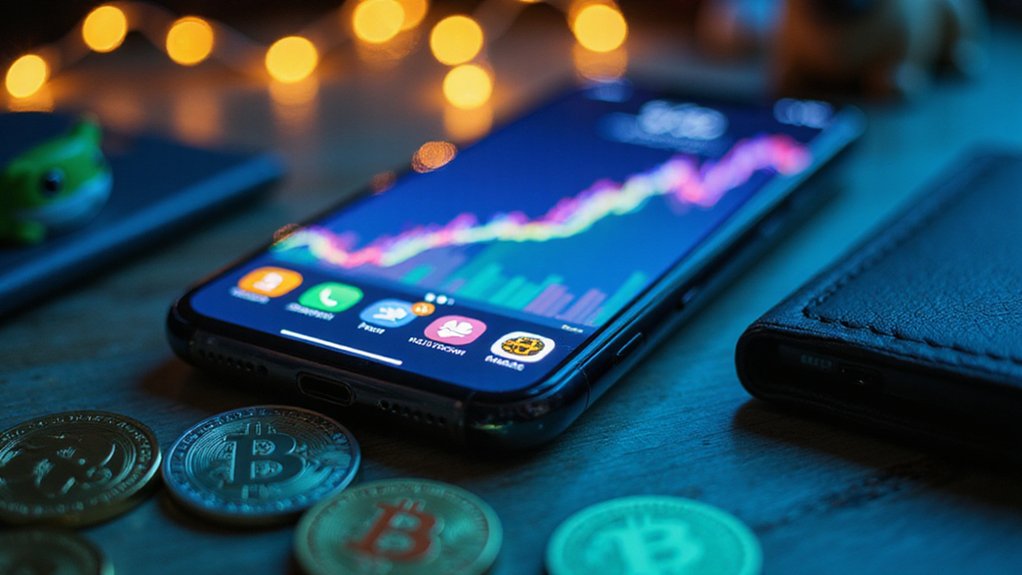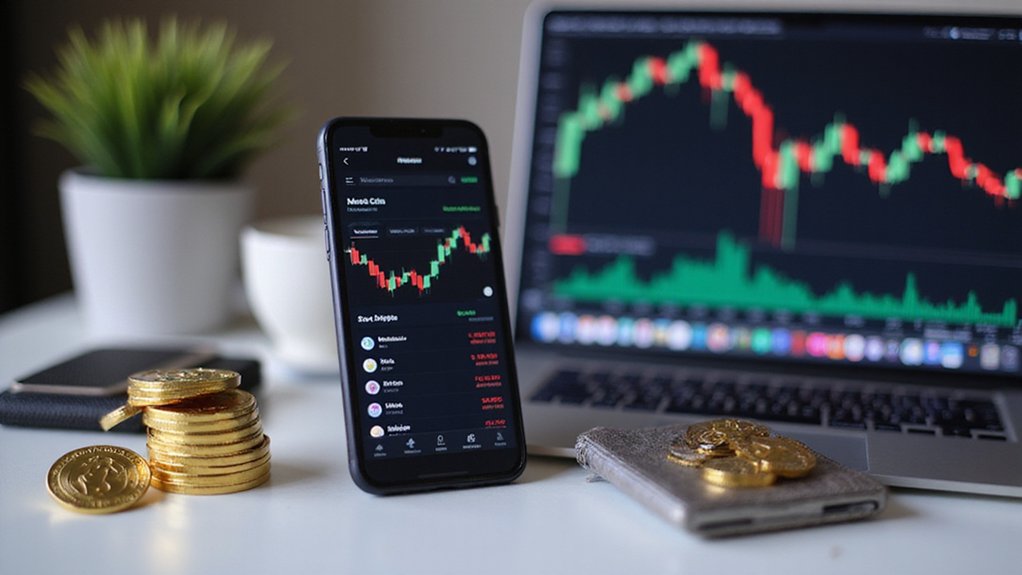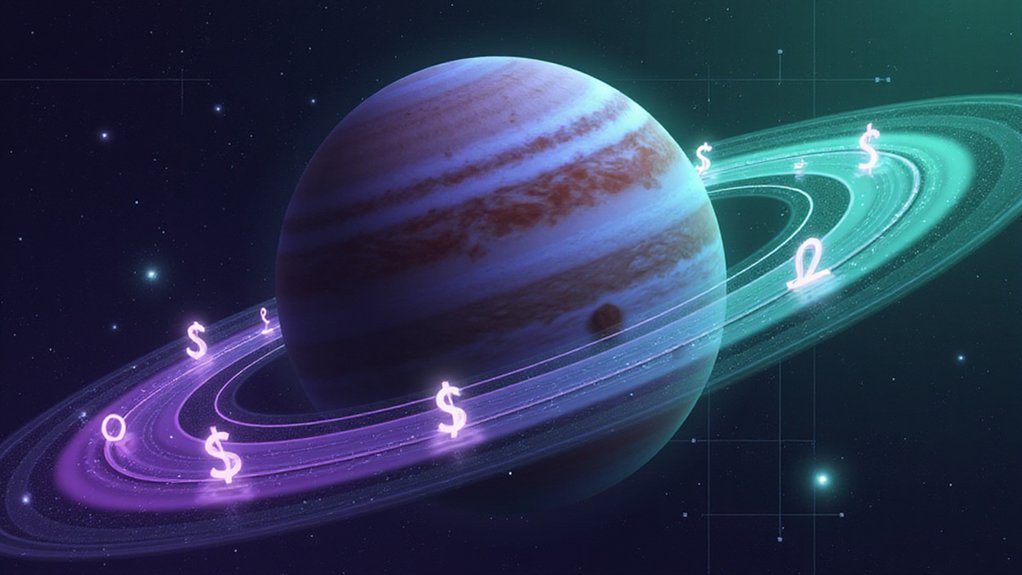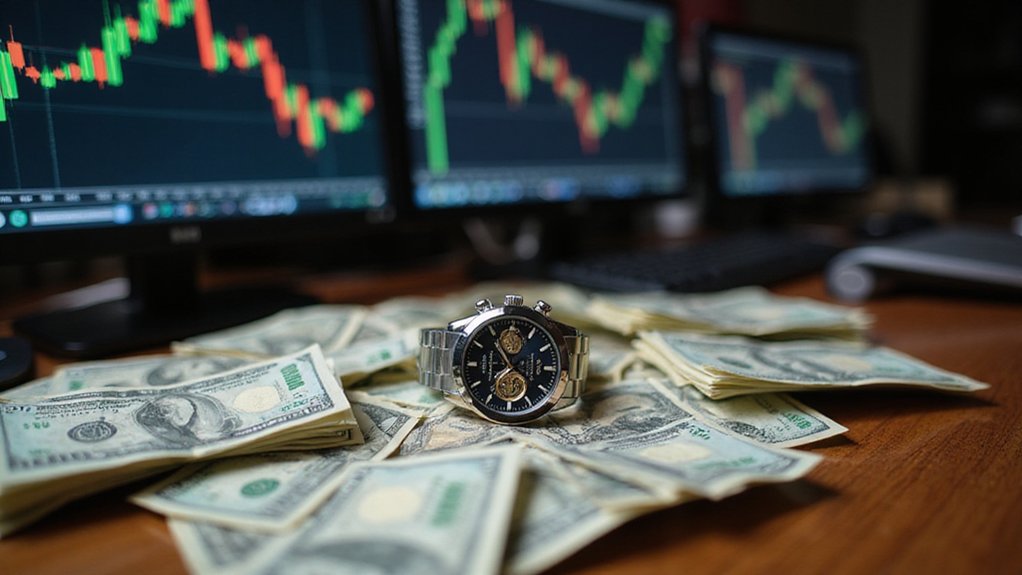Buying memecoins requires selecting a reputable exchange (Binance, Coinbase, or Moonshot), completing identity verification, and funding your account through bank transfers or credit cards—each with distinct fee structures. Navigate to spot trading, search for your desired memecoin, and execute either market orders (immediate execution) or limit orders (price-specific thresholds). Security measures, including contract address verification and hardware wallets, prove essential in this wildly speculative corner of crypto. The following steps illuminate this curious intersection of internet culture and financial speculation.

Why have traditionally sound investment vehicles become passé when one can instead funnel capital into digital tokens featuring cartoon dogs and frogs?
The meteoric rise of cryptocurrencies predicated on internet humor rather than intrinsic utility has captured the zeitgeist of modern financial markets, with platforms scrambling to accommodate the surging demand for these speculative assets.
Memecoins—exemplified by Dogecoin, Shiba Inu, and PEPE—represent the confluence of social media virality and blockchain technology, creating investment opportunities that more closely resemble casino gambling than traditional portfolio construction.
The digital alchemy of internet culture and finance birthing speculative vehicles with entertainment value superseding economic fundamentals
Prospective memecoin investors must first select an appropriate trading platform.
Binance has emerged as the preeminent exchange for such transactions, offering an intuitive interface and extensive trading pairs.
Coinbase presents an alternative with incentives for neophytes, while Moonshot facilitates purchases via conventional payment methods including Apple Pay.
The prudent investor will establish an account on their chosen platform through a verification process that varies according to jurisdictional regulations and platform requirements.
Account funding constitutes the next critical step.
This typically involves bank transfers or credit card transactions, each carrying distinct fee structures that warrant careful consideration.
Upon successful deposit, navigation to the spot trading section allows for the location of desired memecoins via search functionality.
Market orders execute immediately at prevailing prices, while limit orders permit specification of acceptable purchase thresholds—a distinction of particular relevance in highly volatile memecoin markets.
Post-acquisition security measures cannot be overstated.
Self-custodial solutions such as Phantom wallets provide sovereignty over digital assets that centralized exchanges cannot match. Always verify the memecoin’s contract address using blockchain explorers to avoid potential scams that plague this market segment.
Hardware wallets offer additional security for significant holdings, though their implementation requires technical acumen beyond many novice investors.
The memecoin ecosystem demands circumspection and research disproportionate to traditional markets.
Some meme coins like Dogwifhat on Solana have demonstrated significant price volatility driven primarily by community engagement rather than fundamental value.
Diversification remains paramount given the ephemeral nature of meme-based value propositions.
While potentially lucrative, these digital assets exemplify high-risk speculation—a financial frontier where fortunes materialize and evaporate with equivalent velocity, often predicated on nothing more substantial than a clever graphic and collective whimsy.
Frequently Asked Questions
Are Meme Coins a Good Long-Term Investment Strategy?
Meme coins present a paradoxical investment proposition—while some investors report substantial gains, their inherent volatility and lack of fundamental value make them dubious long-term holdings.
The market’s capricious nature (driven more by social media trends than economic principles) renders these assets particularly susceptible to devastating corrections.
Though diversification might justify minimal exposure, allocating significant portfolio percentages to these speculation vehicles contradicts established investment wisdom.
The 26% believing in their longevity may be conflating popularity with sustainability—a potentially costly confusion.
How Much Should Beginners Allocate to Meme Coin Investments?
Financial advisors typically recommend beginners allocate no more than 5-10% of their portfolio to high-risk speculative assets like meme coins.
This modest allocation—which presupposes the existence of a broader, diversified investment strategy—allows for participation in potential upside while limiting catastrophic downside.
The percentage should decrease proportionally with one’s financial fragility; those living paycheck-to-paycheck might reasonably question whether allocating anything beyond entertainment funds to digital assets named after canines represents prudent financial management.
What Tax Implications Do Meme Coin Profits Have?
Meme coin profits trigger capital gains tax obligations when sold at a profit—an inevitability the taxman awaits with bureaucratic patience.
Holding periods matter greatly; assets kept for over a year often qualify for preferential long-term rates.
Mining, staking, and airdrop rewards face immediate income taxation at ordinary rates.
Jurisdictional variations abound globally, with reporting requirements differing substantially across borders.
Meticulous record-keeping becomes paramount, as the penalties for non-compliance can transform profitable endeavors into costly adventures.
Can Meme Coins Completely Disappear From the Market?
Meme coins can indeed vanish from the market entirely—a fate befalling roughly 97% of these digital curiosities.
When liquidity evaporates, development ceases, and community interest wanes, these tokens effectively cease to exist as tradable assets.
While the blockchain may technically preserve their code in perpetuity (a rather hollow immortality).
The practical reality is stark: thousands monthly join the digital graveyard, their websites deleted and trading volumes flatlined, victims of their fundamentally ephemeral nature.
How Do Pump-And-Dump Schemes Affect Meme Coin Prices?
Pump-and-dump schemes devastate meme coin markets through a predictable yet remarkably effective cycle: artificially inflating prices via coordinated misinformation campaigns, exploiting FOMO-driven investment surges, then rapidly liquidating positions once target valuations are achieved.
These machinations create violent price volatility characterized by meteoric rises followed by catastrophic collapses—often leaving late-stage retail investors holding virtually worthless assets.
The particularly insidious aspect? The minimal capital required to manipulate these low-liquidity assets makes them perfect vehicles for such financial chicanery.









